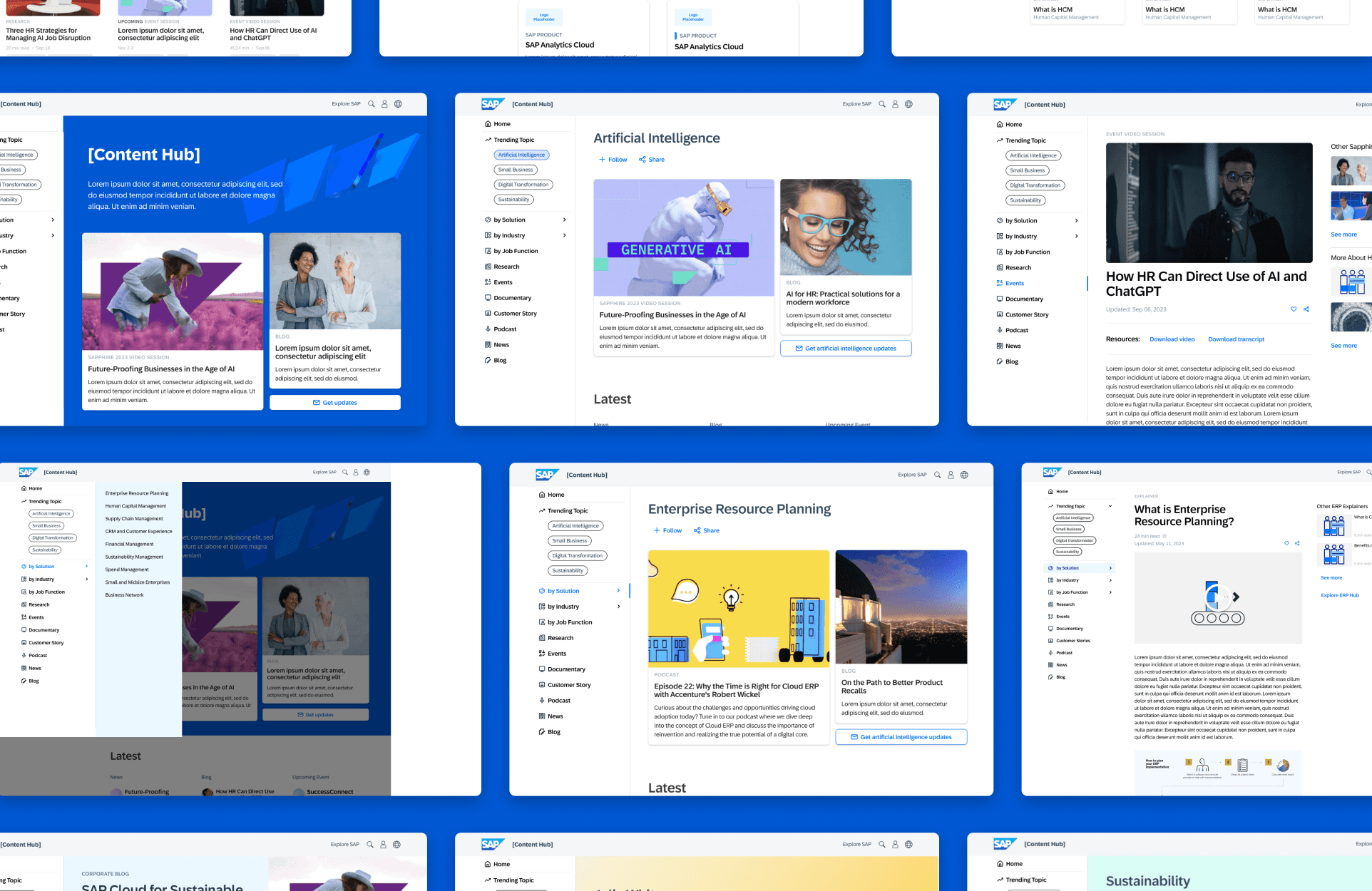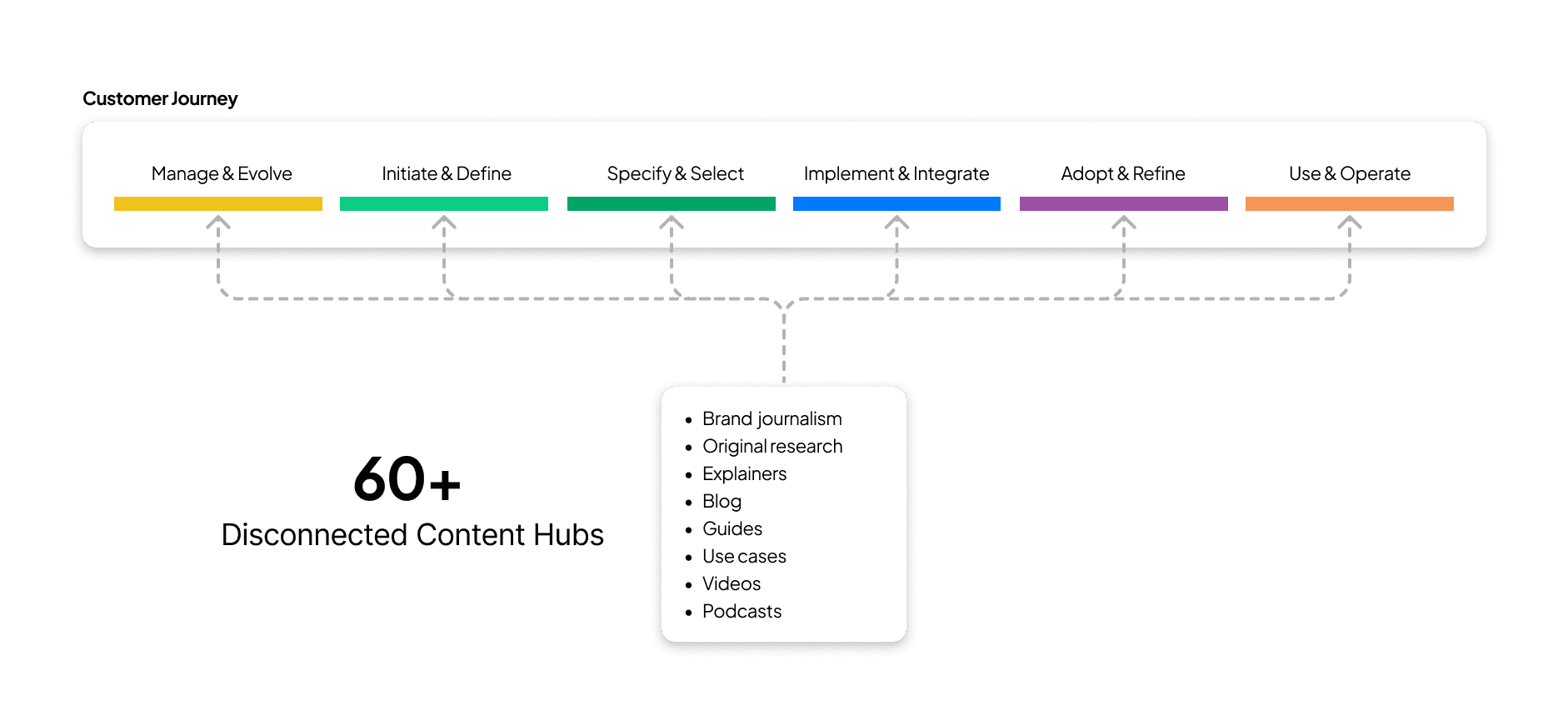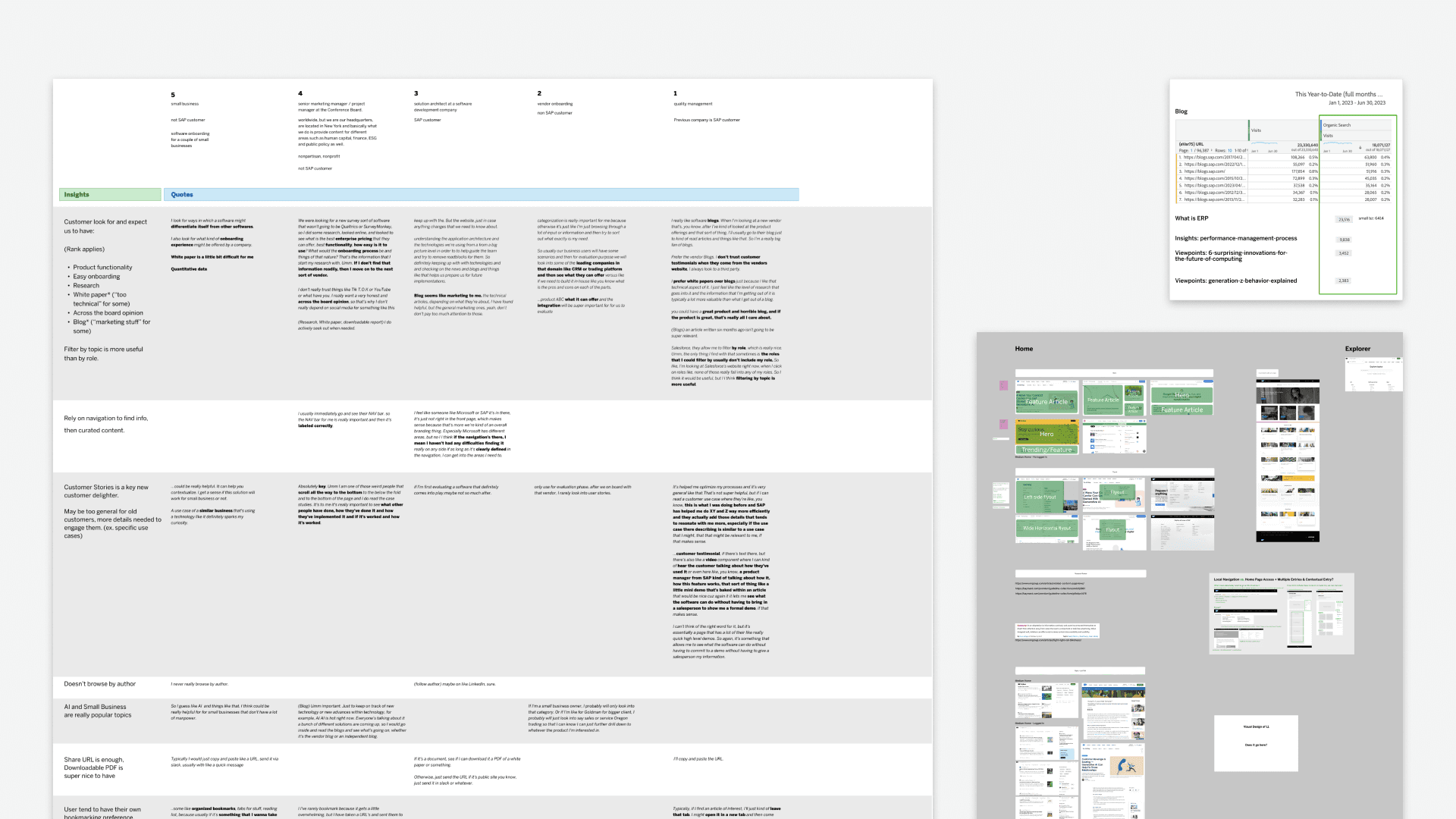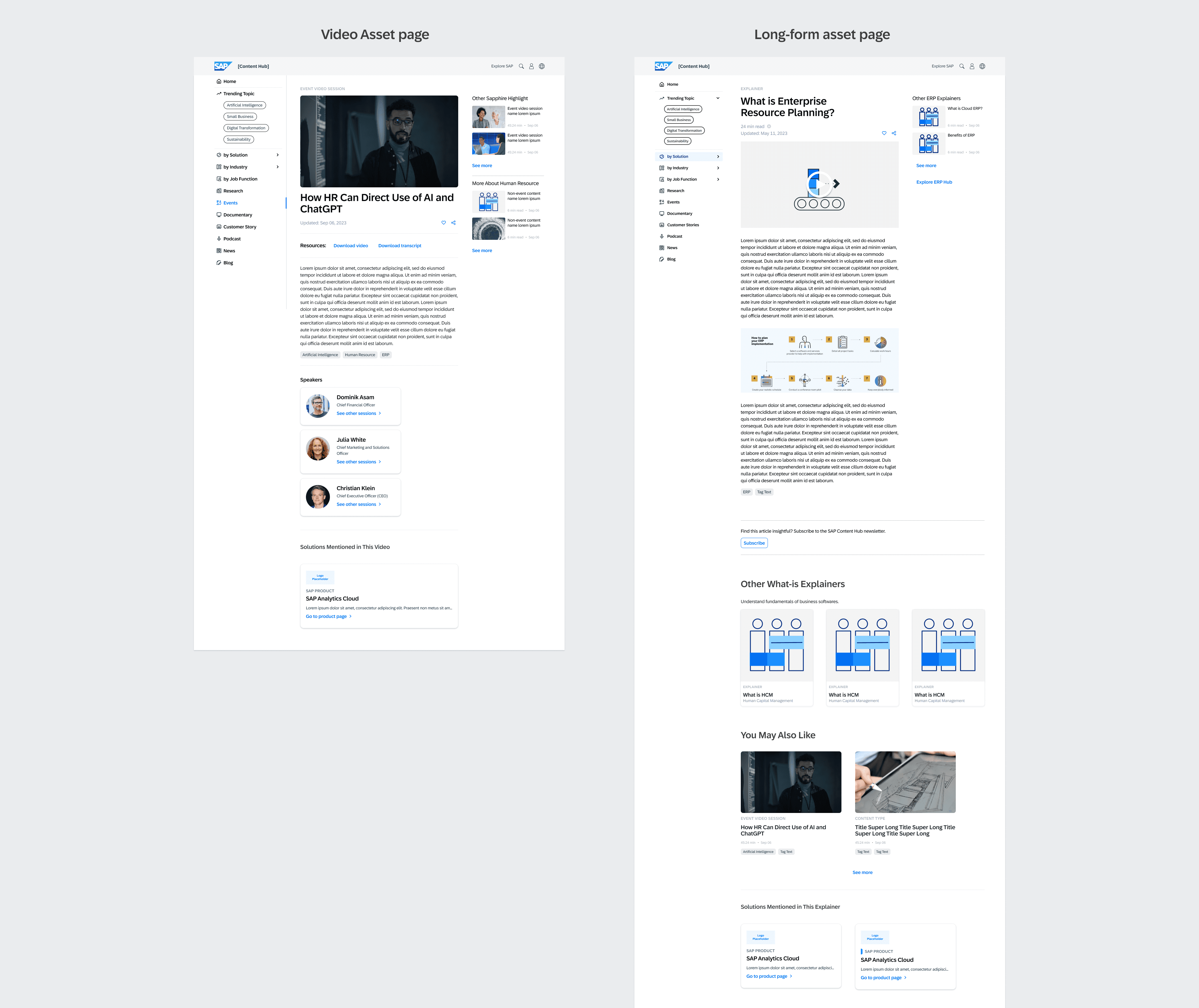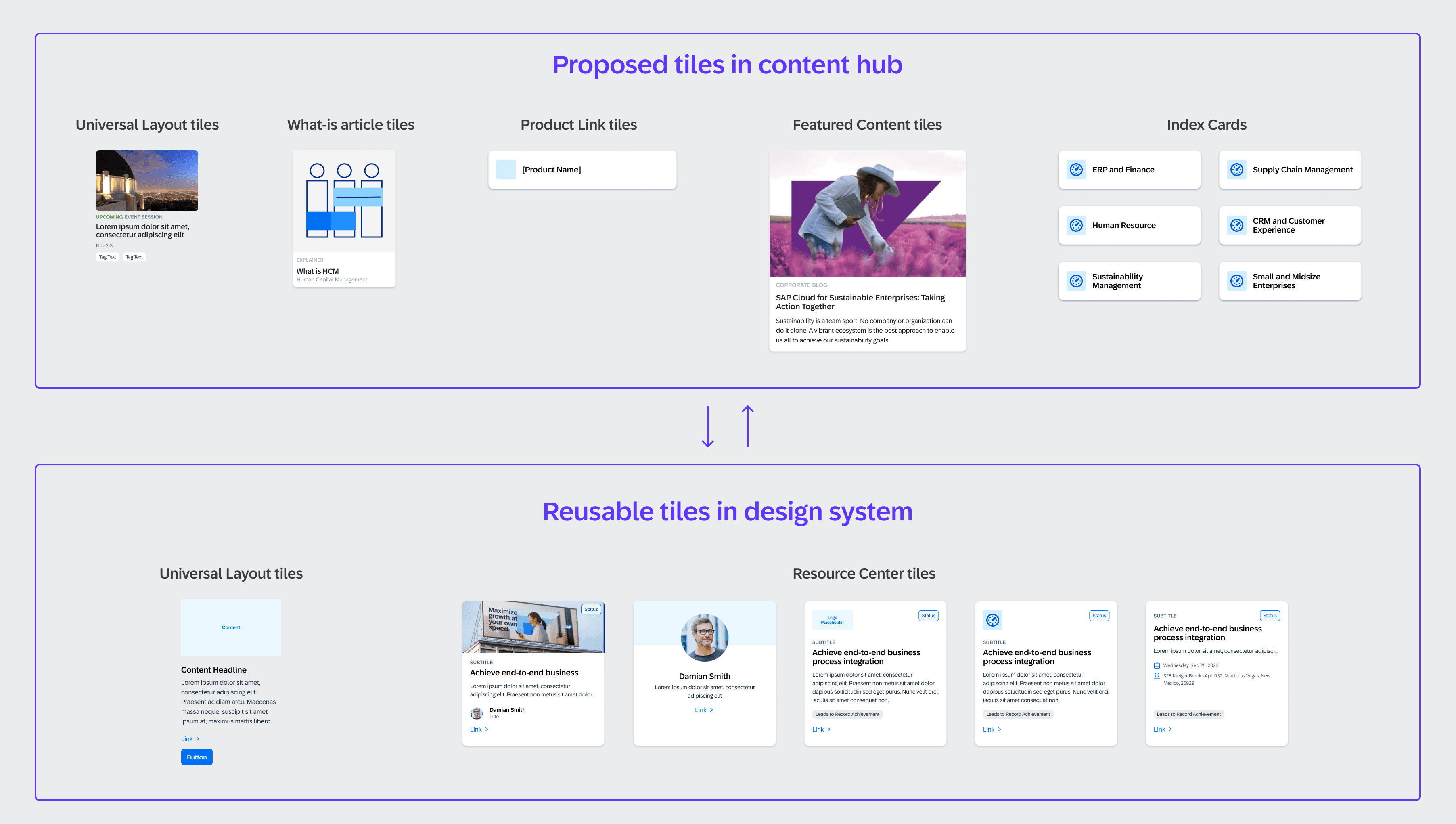Industry
SaaS / Digital Marketing
Company
SAP
SAP Content Hub
0-1
Redesign
UX Strategy
Visionary
Design System Support
About SAP Content Hub
SAP offers a variety of digital storytelling experiences on SAP.com through its content hubs. These hubs are designed to address key audience questions across different stages of the customer journey, featuring a diverse array of content such as brand journalism, original research, explainers, blogs, guides, use cases, customer stories, videos, and podcasts.
However, 88% of these content hubs receive fewer than 1,000 visits annually.
From SAP’s perspective, these hubs are resource-intensive to maintain, with challenges in tracking content performance and its impact on the customer journey. On the customer side, there is low engagement, with many feeling unsupported despite SAP’s significant investment in high-value content. This points to a misalignment between our expectations and actual outcomes.
My Role and Contributions
As a UX designer for the Content Hub project, my tasks involved conducting UX research, participating in user interviews and workshops with stakeholders, and creating site hierarchy, wireframes and high-fidelity designs.
Business Goal
(Informed by stakeholder interviews)
Build trust and brand preferences for decision-makers, even outside of buying cycle (including early awareness + post-purchase journey). Excite and engage the next generation of SAP fans to drive our cloud business growth. Enable new audiences to discover, engage, and share high-value content that educates and empowers.
UX Goals
(Informed by UX research including competitive analysis, web engagement data, UX audit and user interviews)
How do we empower and engage our customers by connecting them to the high value content and guidance we provide?
Snap shot of user interview notes, web engagement data and competitive analysis.
UX Goal Breakdown
Increase connectivity of high value content
Establish a clear landing page strategy
Provide continuous support for customers to keep exploring
Do the work for customer
What’s trending? What should I know? What else?
How long is the article/video? What’s a best way for me to consume the content?
Help me stay connected with fresh research/discussion on this topic
Make it audience specific
Topic first approach
Ensure that the learning path is effective and coherent, regardless of where users begin
Design Solution Highlights
Site hierarchy of SAP Content Hub
Navigation Strategy
L1, L2 and L3 page designs
Detailed site structure / lo-fi wireframes
Different types pf L2 pages - Generic topic pages, Author pages, and Themed Topic pages.
Contextual Tag Presentation
Content Hub was designed to offer an approachable and engaging experience for audiences. By presenting selected content that is relevant and trending on the right rail and in curated categories, we aimed to lower the barrier for engagement, enticing first-time visitors to explore further and interact with the content.
On an L2 landing page of AI topic, besides AI the default topic tag, we also display other topic tags assigned to the content (such as "Human Resource"); however, on an L3 asset page when there are multiple associated topic tags assigned to one piece of content, we need to provide clear UX copy on recommended content on how they are related to the current one - whether they are from the same video series ("More Video Sessions from Sapphire"), or they have the same topic tags ("AI", "Human Recourse"...).
Users have different expectation of where the recommended content are located in Video page and Long-form (article page).
Support Design System
Collaborating with design system team to figure out styles we may need for content tiles. What I explored were communicated to design system team as a reference of future needs and inspiration for the development of the evolving SAP Design System that adopts the new brand visual identity.
Outcome and Impact
Following a comprehensive review, we received approval from the steering committee. My input on the IA and design laid the foundational framework necessary for the team to advance and refine the content strategy. In 2024, SAP Content Hub continues to be design and developed with SAP's in-house designers, developers and content team, and is successfully launched in June.
Combined with my efforts on the redesign of SAP Microsites, 60+ disconnected Content Hubs merged into 1 cohesive hub and a reusable template for 5+ active microsites.
We are expecting increased engagement rate triggered by connectivity and discoverability of content, longer time spent on visit, lower bounce rate, increased organic social / search visibility by topic, and increased click thru to other SAP digital touch points.
